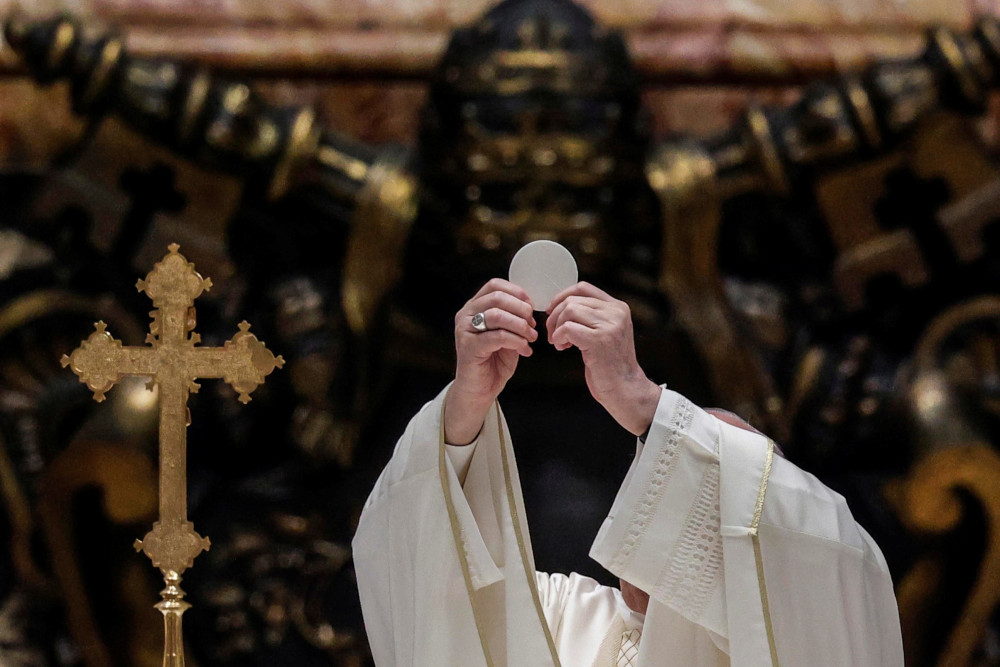The Eucharist, one of the central rites observed in the Christian tradition, signifies the body of Christ as represented by bread. The use of unleavened bread in the Eucharist is deeply rooted in Christian theology, liturgical practices, and historical continuity with the Jewish Passover. This article explores why unleavened bread is used in the Eucharist, underscoring its symbolic significance, scriptural basis, and its continuation of the Jewish Passover tradition.
Historical and Scriptural Foundations Behined The Eucharist
The Eucharist finds its origins in the Last Supper, a Passover meal that Jesus shared with his disciples on the night before his crucifixion. Scriptural accounts, particularly in the Synoptic Gospels (Matthew 26:17-29, Mark 14:12-25, and Luke 22:7-20), describe Jesus instituting the Eucharist during this meal. Given the timing of the Last Supper in relation to the Jewish Passover, it is believed that unleavened bread was used by Jesus, aligning with the Jewish practice of eating unleavened bread (matzah) during Passover.
Symbolic Significance
Unleavened bread, free from yeast, symbolizes purity and freedom from sin in biblical contexts. Yeast, in various passages of the Bible, is often associated with corruption and sin. The use of unleavened bread in the Eucharist is thus seen as symbolically appropriate, representing the sinless nature of Christ’s sacrifice. Moreover, unleavened bread’s simplicity and plainness reflect the humility of Christ’s life and his suffering.
Continuation of the Passover Tradition
The Eucharist as a continuation of the Passover emphasizes the fulfillment of Old Testament prophecies through the New Covenant established by Christ. Just as the Passover commemorated the Israelites’ liberation from Egyptian bondage, the Eucharist celebrates the new freedom from sin afforded by Christ’s sacrifice. The use of unleavened bread links the Christian observance directly to its Jewish roots, serving as a continuous reminder of God’s deliverance and mercy.
Liturgical Practices Of The Eucharist
Different Christian denominations have varying practices regarding the type of bread used in the Eucharist. The Roman Catholic Church, the Eastern Orthodox Church, and several other Christian denominations adhere strictly to the use of unleavened bread, following the tradition and symbolism established by the Last Supper. Other denominations may use leavened bread, emphasizing the resurrection and the new life in Christ. Despite these differences, the use of bread, whether leavened or unleavened, remains a central element in the ritual, symbolizing the body of Christ offered for the redemption of humanity.
Conclusion
The use of unleavened bread in the Eucharist serves as a profound symbol of purity, a historical connection to the Jewish Passover, and a liturgical expression of Christ’s sacrifice. It is a practice steeped in biblical tradition, theological significance, and historical continuity. By participating in the Eucharist with unleavened bread, believers partake in a ritual that connects them with the foundational events of their faith, commemorating the sacrifice of Christ and the deliverance it signifies.
The symbolism and traditions surrounding the use of unleavened bread in the Eucharist highlight the deep connections between Christianity and Judaism, and the continuity of sacred practices that span centuries. This ritual practice is not only a matter of doctrinal adherence but also a profound expression of faith, remembrance, and community within the Christian tradition.
